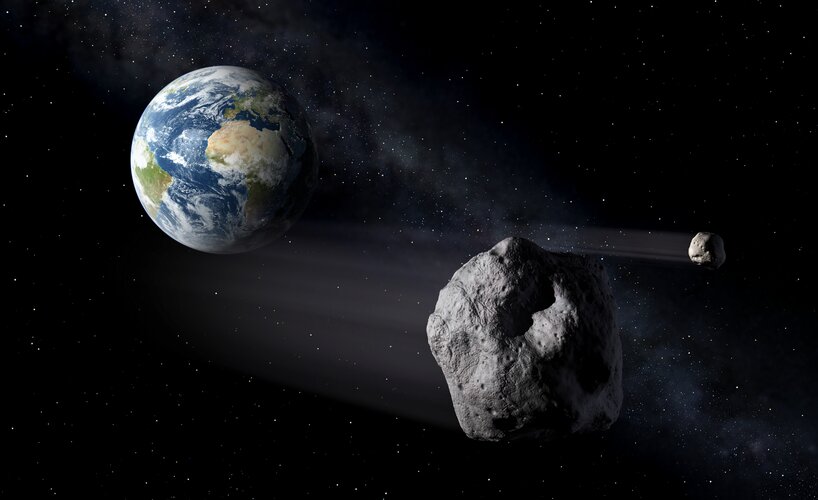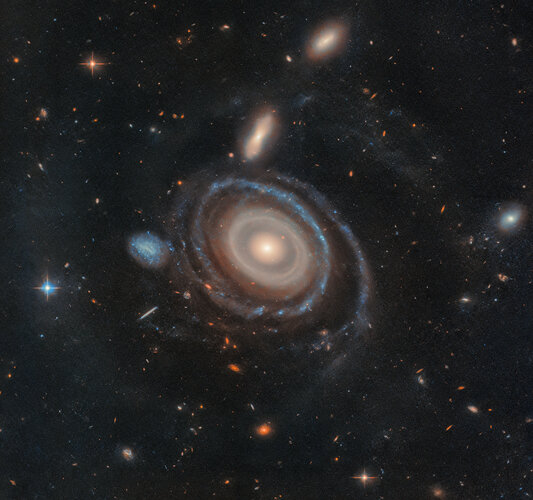
Copernical Team
Lunar rocks help scientists pinpoint when the moon crystallized
 scientists study samples from Apollo missions, reveal new details about lunar history
Even though humans have pondered the moon since the first of us looked skyward, there is still much we still don't know about it.
One of these unsolved questions is its origin story. We think the moon formed after a colossal collision between Earth and another huge object created two balls of molten magm
scientists study samples from Apollo missions, reveal new details about lunar history
Even though humans have pondered the moon since the first of us looked skyward, there is still much we still don't know about it.
One of these unsolved questions is its origin story. We think the moon formed after a colossal collision between Earth and another huge object created two balls of molten magm Rocket Lab launches 5th satellite batch for Kineis IoT constellation
 Rocket Lab USA, Inc. (Nasdaq: RKLB), a global leader in launch services and space systems, achieved a significant milestone today with the successful deployment of five satellites for French Internet-of-Things (IoT) operator Kineis. This marks Rocket Lab's 59th Electron mission.
The mission, designated "IOT 4 You and Me," launched from Rocket Lab Launch Complex 1 in Mahia, New Zealand at 9
Rocket Lab USA, Inc. (Nasdaq: RKLB), a global leader in launch services and space systems, achieved a significant milestone today with the successful deployment of five satellites for French Internet-of-Things (IoT) operator Kineis. This marks Rocket Lab's 59th Electron mission.
The mission, designated "IOT 4 You and Me," launched from Rocket Lab Launch Complex 1 in Mahia, New Zealand at 9 Die Erde aus dem Weltraum: Schneebedeckte Schweizer Alpen
 Image:
Die Bergketten und Täler der Schweizer Alpen sind auf diesem Bild zu sehen, das die Copernicus Sentinel-2 Mission im Dezember 2024 aufgenommen hat.
Image:
Die Bergketten und Täler der Schweizer Alpen sind auf diesem Bild zu sehen, das die Copernicus Sentinel-2 Mission im Dezember 2024 aufgenommen hat. Space weather station
 Video:
00:00:46
Video:
00:00:46
Over the course of a whole day, Norway’s plasma sampler, the multi-Needle Langmuir Probe (m-NLP), is seen being slowly moved around by a robotic arm to be slotted into place on the outside porch of Bartolomeo – the Airbus-operated platform attached to the Columbus laboratory of the International Space Station (ISS).
Since its integration on Bartolomeo in September 2023, the task of this instrument has been to sample its immediate space weather environment by measuring the plasma surrounding the ISS. It does so to an extraordinarily high level of detail, making a few thousand measurements per second.
Plasma, sometimes
ESA endorses Year of Asteroid Awareness and Planetary Defence

The European Space Agency (ESA) has endorsed the United Nations' (UN) designation of 2029 as the International Year of Asteroid Awareness and Planetary Defence.
The initiative will foster international collaboration in the field of planetary defence and educate the public on the risks and opportunities associated with near-Earth asteroids.
Earth from Space: Snow-capped Swiss Alps
 Image:
The ranges and valleys of the Swiss Alps stand out in this image captured by the Copernicus Sentinel-2 mission in December 2024.
Image:
The ranges and valleys of the Swiss Alps stand out in this image captured by the Copernicus Sentinel-2 mission in December 2024. Week in images: 03-07 February 2025

Week in images: 03-07 February 2025
Discover our week through the lens
Can ocean-floor mining oversights help us regulate space debris and mining on the Moon?
 Mining ocean resources needed for electric cars and other devices is currently a hot issue of dispute. Final resolution of how or whether the seabed should be exploited is pending. Outcomes in this contentious area could create precedents that could impact decisions about mining the moon.
These precedents might shape the how and why of mining the Moon and shape the future and the sustainab
Mining ocean resources needed for electric cars and other devices is currently a hot issue of dispute. Final resolution of how or whether the seabed should be exploited is pending. Outcomes in this contentious area could create precedents that could impact decisions about mining the moon.
These precedents might shape the how and why of mining the Moon and shape the future and the sustainab SpaceX launches Maxar 3 mission, high-resolution commercial satellites
 SpaceX launched its Maxar 3 mission, with two high-resolution commercial satellites on board, from the Kennedy Space Center in Florida on Tuesday after Monday's launch was scrubbed.
The Maxar 3 mission, which carried both WorldView Legion satellites into mid-inclination Earth orbit, lifted off from Launch Complex 39A at about 6:13 p.m. EST.
"SpaceX has confirmed that it is now se
SpaceX launched its Maxar 3 mission, with two high-resolution commercial satellites on board, from the Kennedy Space Center in Florida on Tuesday after Monday's launch was scrubbed.
The Maxar 3 mission, which carried both WorldView Legion satellites into mid-inclination Earth orbit, lifted off from Launch Complex 39A at about 6:13 p.m. EST.
"SpaceX has confirmed that it is now se Finland and ESA join forces to establish groundbreaking Earth observation supersite
 In a milestone move, the European Space Agency (ESA), Finland's government, and the Finnish Meteorological Institute have begun laying the groundwork for a new Earth observation calibration and validation supersite in Sodankyla, Lapland. This collaborative endeavor promises wide-ranging benefits for Europe's space community.
Developed as a shared initiative, this facility will bolster ESA'
In a milestone move, the European Space Agency (ESA), Finland's government, and the Finnish Meteorological Institute have begun laying the groundwork for a new Earth observation calibration and validation supersite in Sodankyla, Lapland. This collaborative endeavor promises wide-ranging benefits for Europe's space community.
Developed as a shared initiative, this facility will bolster ESA' 
